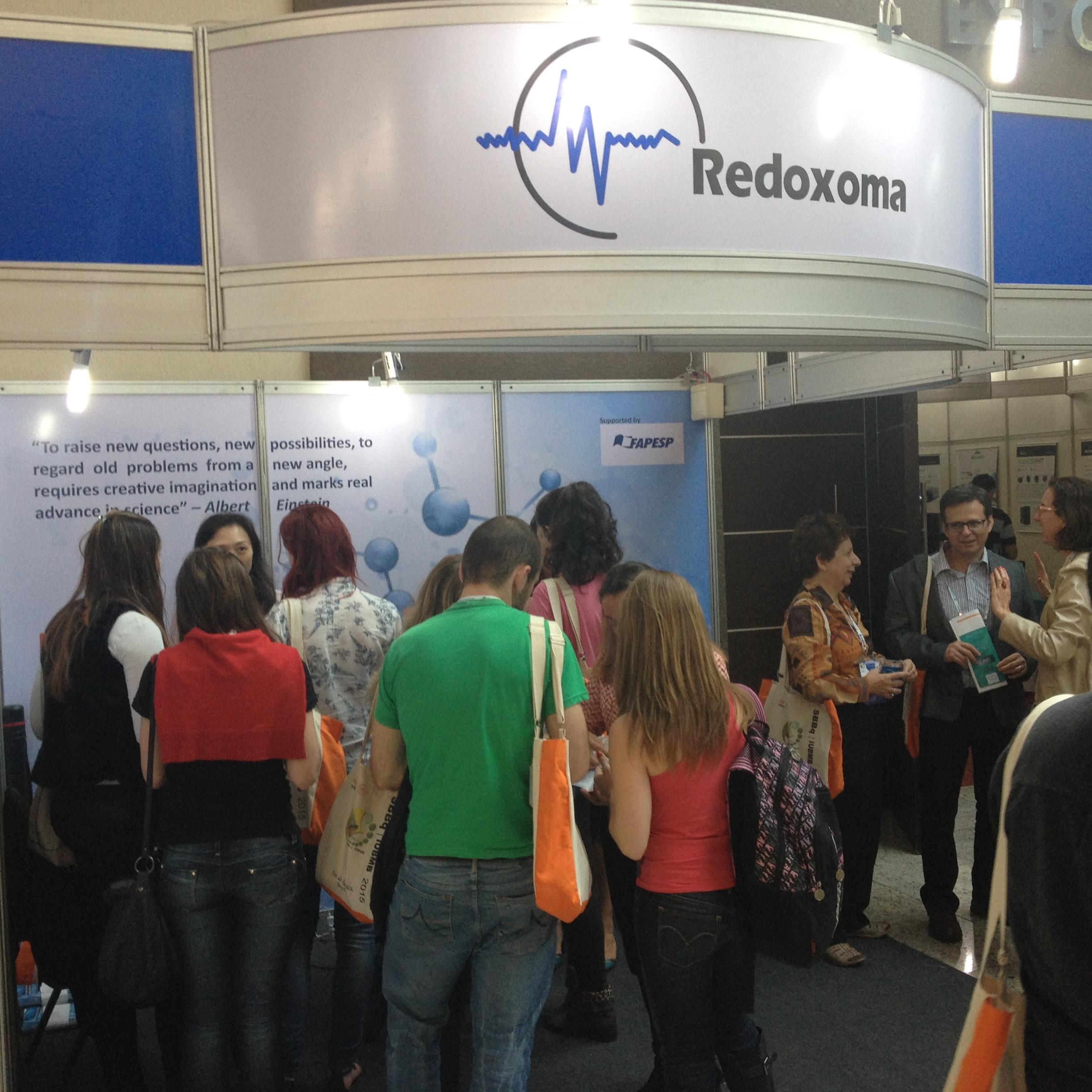CEPID-Redoxoma marks its presence in SBBq / IUBMB 2015
News by Maria Célia Wider
Redoxoma’s booth attracted hundreds of students
 The stand ridden by CEPID-Redoxoma at the 23rd Congress of the International Union of Biochemistry and Molecular Biology (IUBMB) and 44th Annual Meeting of the Brazilian Society for Biochemistry and Molecular Biology (SBBq) was a success and attracted hundreds of students and researchers from various Brazilian states and several countries, interested in knowing the Center.
The stand ridden by CEPID-Redoxoma at the 23rd Congress of the International Union of Biochemistry and Molecular Biology (IUBMB) and 44th Annual Meeting of the Brazilian Society for Biochemistry and Molecular Biology (SBBq) was a success and attracted hundreds of students and researchers from various Brazilian states and several countries, interested in knowing the Center.
The team formed by Tsai Araujo, Camille Caldeira, Edlaine Linares and Maria Celia Wider was responsible for the dissemination of CEPID-Redoxoma activities and distributed folders with information on the group’s researchers and their projects. They registered 301 e-mails, mostly students, which will receive the Redoxoma Newsletter.
Redoxoma scientists also participated in symposia: Ohara Augusto, from IQ-USP, and Francisco Laurindo, from InCor at FMUSP, both in the symposium Redox Signaling, and Maurício Baptista, from IQ-USP, in the symposium Shedding light on life. Hugo Aguilaniu, from École Normale Supérieure de Lyon, France, and Redoxoma’s international collaborator, attended the symposium Aging. And Bruno Chausse, who has just obtained his doctorate under the supervision of Professor Alicia Kowaltowski, from IQ-USP, presented his work to compete for the Young Talent award.
Scientists invited to give lectures were Tom Steitz (Nobel Prize in Chemistry 2009), Martin Chalfie (Nobel Prize in Chemistry 2008), Salvador Moncada, Günther Meister, Kurt Wüthrich (Nobel Prize in Chemistry 2002), José Onuchic, Johann Deisenhofer (Nobel Prize in Chemistry 1988) and Bruce Alberts.
 Alicia Kowaltowski, Full Professor at the Instituto de Química, Universidade de São Paulo, and member of the INCT and CEPID of Redox Processes in biomedicine - Redoxoma, was one of the winners of 2014 Award Capes-Elsevier. The award ceremony was held at the Copacabana Palace in Rio de Janeiro, last May. The award is a partnership between Elsevier and the Coordination of Improvement of Higher Education Personnel, Ministry of Education (CAPES / MEC). This year, ten women scientists received the award for their contribution to the development of science in Brazil. The criteria for the selection of the winners was researchers who have impacted the scientific community, published articles indexed in Scopus and the number of students under their advisement proven by Currículo Lattes.
Alicia Kowaltowski, Full Professor at the Instituto de Química, Universidade de São Paulo, and member of the INCT and CEPID of Redox Processes in biomedicine - Redoxoma, was one of the winners of 2014 Award Capes-Elsevier. The award ceremony was held at the Copacabana Palace in Rio de Janeiro, last May. The award is a partnership between Elsevier and the Coordination of Improvement of Higher Education Personnel, Ministry of Education (CAPES / MEC). This year, ten women scientists received the award for their contribution to the development of science in Brazil. The criteria for the selection of the winners was researchers who have impacted the scientific community, published articles indexed in Scopus and the number of students under their advisement proven by Currículo Lattes.
Add new comment